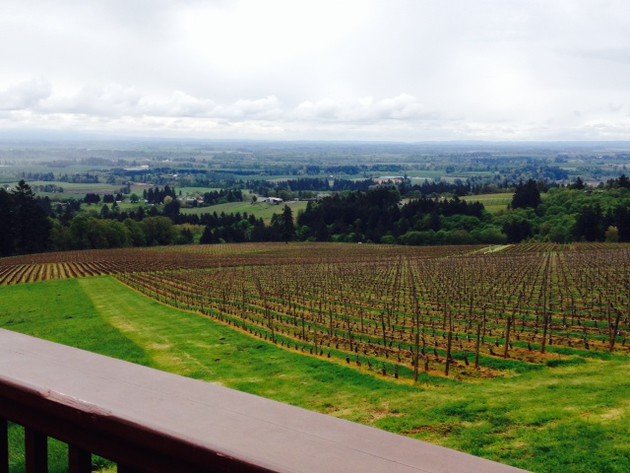Oregon wineries boost profile through direct sales
Oregon's wineries have turned to direct cellar door sales to help boost their brand and develop a following both in the US and internationally.
With more than 300 tasting rooms scattered around the Dundee Hills AVA in Oregon, it seems unlikely that not long ago these wineries had no place to pour wine for the public. Nonetheless, cellar door wine sales is a very recent phenomenon in the area.
 Oregon's Willamette ValleyProducers are working hard to boost their profile both at home in the US and overseas, and say direct sales, via cellar doors, are helping do this.
Oregon's Willamette ValleyProducers are working hard to boost their profile both at home in the US and overseas, and say direct sales, via cellar doors, are helping do this.
In recent years, reports on wine tourism in many of the world's wine regions have illustrated that creating an exceptional winery experience for the consumer helps boost direct sales. To achieve this, wineries - predominantly from the new world - have explored innovative ways to improve their offering including food and wine pairing, tours, educational courses and entertainment.
A recent journey through the Willamette Valley in Oregon revealed the fast growing nature of this trend. Eyrie Vineyards, established in the 1960s as the founding winery of the region, operated for nearly fifty years before opening their public tasting room in 2009. Managing director Jason Lett oversaw the addition one year after taking over the company from his father, breaking ground for cellar door sales and the establishment of a wine club. Today, one-third of total sales are direct from the tasting room. For Lett, allowing 100% of sales go through distributors was not effective for building the reputation of the brand and maintaining a loyal customer base. "Distributors are making it very difficult for small producers," he said.
Another founding winery in the region, Adelsheim Vineyards, began producing and selling wine in the 1970's, but only in 2009 did they add a fully equipped tasting room. Today, cellar door sales for the winery equate to 7 to 8% of total sales. Similarly, Domaine Drouhin established a state of the art gravity flow winery in 1989, but did not open a tasting room for the public until 2004. The move, however, was made at an ideal time as later that year the film Sideways hit theatres, boosting Pinot Noir sales across the USA.
Local wine tourism is a very recent development in Oregon; it was not in high demand when most of these wineries started out. David Adelsheim, co-founder and president of Adelsheim Vineyards, stressed that the key difference between the Oregon wine industry and other young US wine regions is that other regions, as in the case of Virginia, were never required to go beyond their front doors to sell wines. Oregon, on the other hand, had to establish a reputation in international and national markets before local wine tourism gained momentum.
Adelsheim said: "Oregon is what it is because there was no tourism in the beginning. We had to go beyond borders to sell wine, and Oregonians were impressed. Oregon had to first establish a reputation, and based on that, an industry."
Just as other new world wine regions have done, the Oregon wine industry has finally recognised how cellar door sales contribute to a wine business, and wine tourism will undoubtedly continue to develop throughout the Willamette Valley. Adelsheim pointed to wine tourism as the key to stimulating growth in any wine region. "Wine tourism is how wine is sold," he said. "If you don't have a way for consumers to see what you're doing and be delighted, it's difficult to grow."




